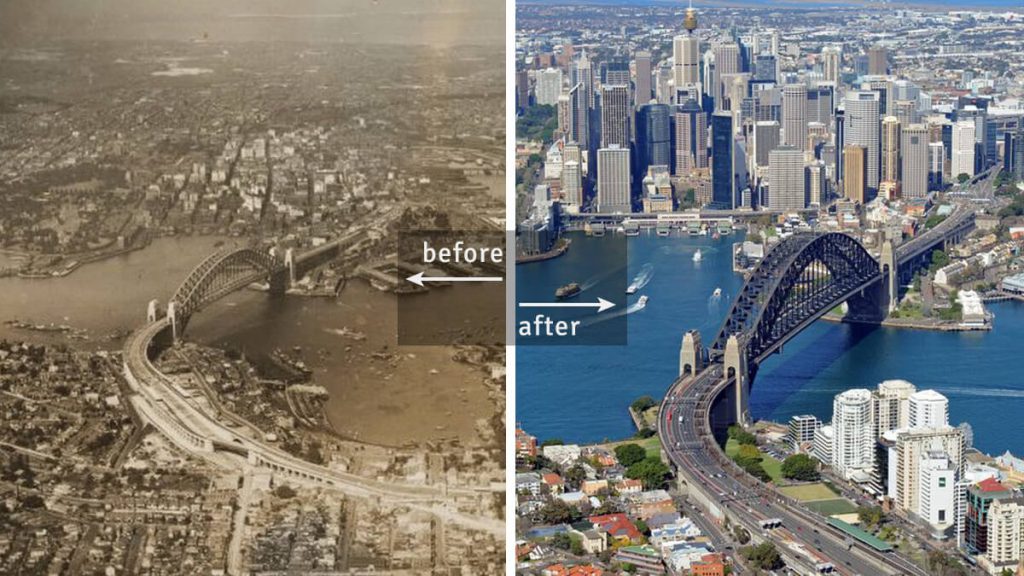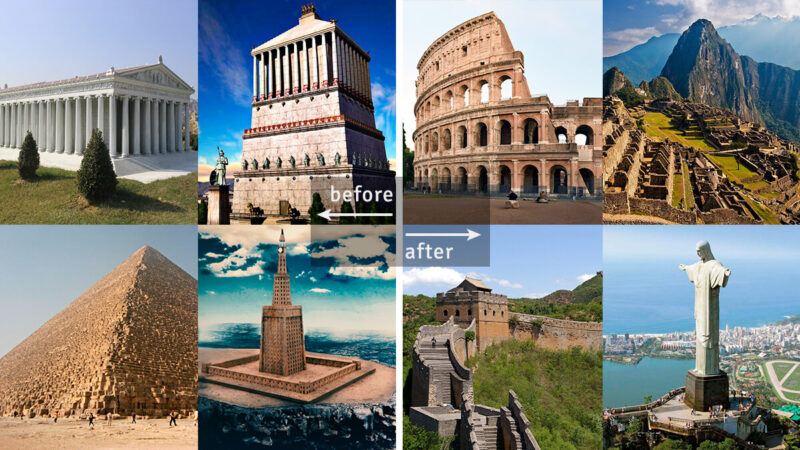25 Famous Cities’ Pictures Showing How They Changed Over Time
Our live is being changed more and more quickly. While it took hundred of years of ancient cities to grow and change its look, now even several years are enough to build a big city from a dust or build skyscrapers from small houses. We may not notice those changes at a first glance, but old photos can bring all these change into the view. Have a look at these cities before and after pictures. Compiled by Bored Panda, they’re sure to give you a fresh perspective on how you look at the world.
1. Dubai, United Arab Emirates
before
Dubai had already embarked on a period of infrastructural development and expansion. Oil revenue, flowing from 1969 onwards supported a period of growth with Sheikh Rashid embarking on a policy of building infrastructure and a diversified trading economy before the emirate’s limited reserves were depleted. Oil accounted for 24% of GDP in 1990, but had reduced to 7% of GDP by 2004.
1991

2008
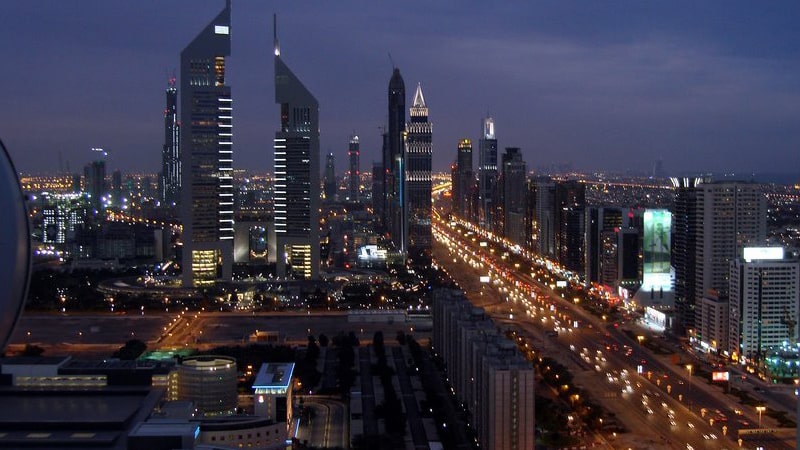
2000

Now
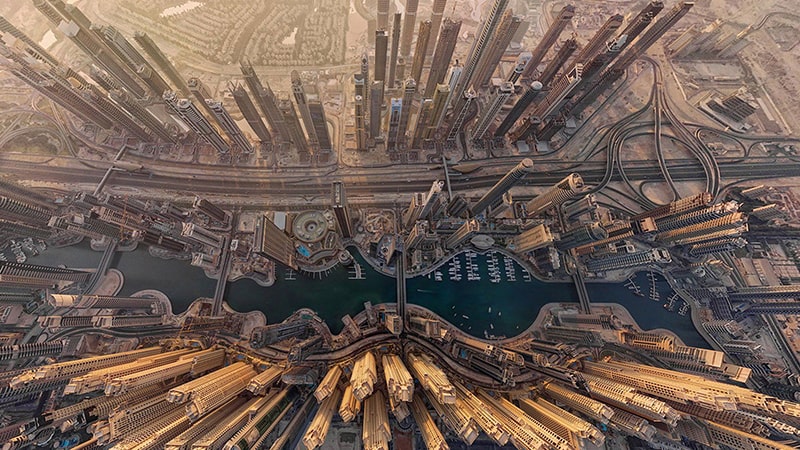
after
Dubai Marina is an artificial canal city located on a 3 km stretch of the Persian Gulf shoreline. It was constructed by bringing in water from the gulf into the designated site of Dubai Marina and creating a man-made waterfront. It houses various iconic structures like the Jumeirah Beach Residence and Masjid Al Rahim mosque. Claiming to be the world’s largest man-made marina, Dubai Marina has helped a great deal in shaping the history of Dubai.
2. Seoul, South Korea
before
In 1904, an American by the name of Angus Hamilton visited the city and said, “The streets of Seoul are magnificent, spacious, clean, admirably made and well-drained. The narrow, dirty lanes have been widened, gutters have been covered, roadways broadened. Seoul is within measurable distance of becoming the highest, most interesting and cleanest city in the East.”
1900
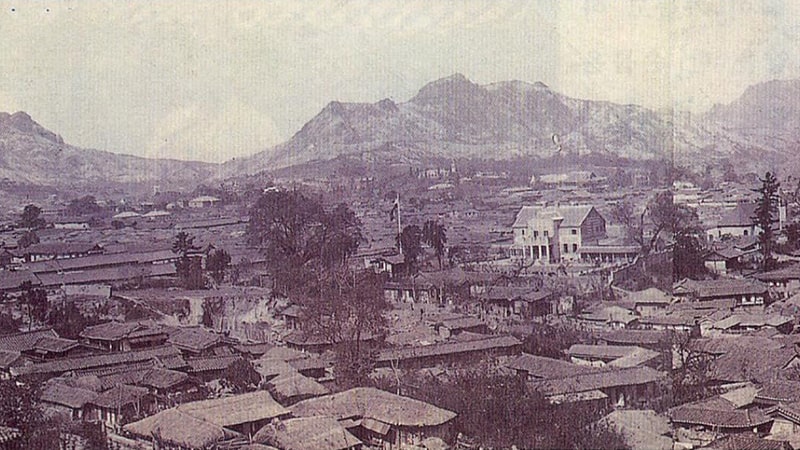
Now

after
In the 2000s, with the development of Informational Technology and an increase in citizens’ demand for improved quality of life, Seoul’s urban management policy took a shift towards creating a sustainable city with advanced IT. In tandem with several park development projects, such as the Cheonggyecheon Stream restoration and Seoul Forest development project, the Seoul Metropolitan Government’s administration became digitized.
3. Vilnius, Lithuania
before
Technological changes in Vilnius, implicated social changes and a process of rapid urbanization started. A grand new civic center was constructed to the west of the Old Town, to be joined by largely wooden suburbs of Žvėrynas, Šnipiškės, Naujininkai, Rasos, Žvejai and Naujieji Pastatai in the 1890s and 1900s.
1900

Now
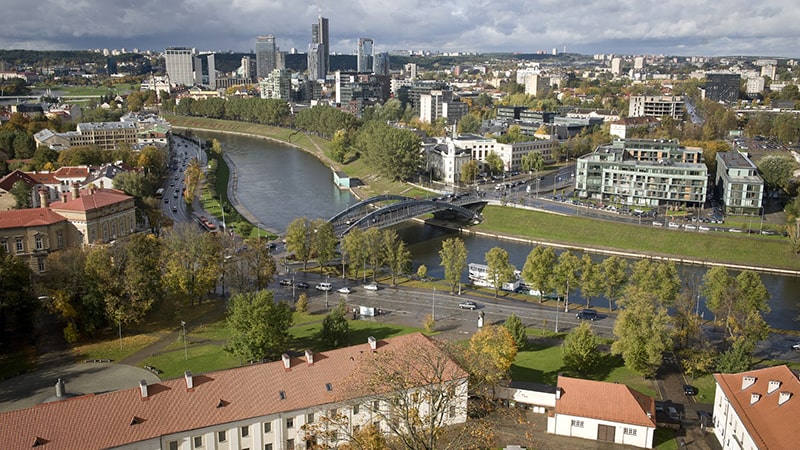
after
Vilnius is classified as a Gamma global city according to GaWC studies, and is known for the architecture in its Old Town, declared a UNESCO World Heritage Site in 1994. Before World War II, Vilnius was one of the largest Jewish centres in Europe. Its Jewish influence has led to its nickname “the Jerusalem of Lithuania”. Napoleon called it “the Jerusalem of the North” as he was passing through in 1812. In 2009, Vilnius was the European Capital of Culture, together with Linz, Austria.
4. Abu Dhabi, United Arab Emirates
before
Abu Dhabi is known as the cultural heart of the UAE, enthusiastically marketing cultural and sporting events that represent its past. Sports include camel racing and dhow sailing, and cultural activities include Arabic poetry, dances and music.
1970
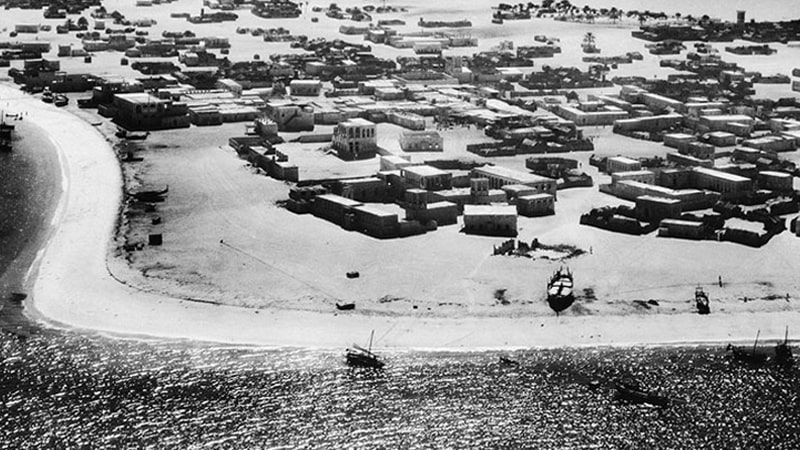
Now

after
The emirate’s culture is strongly embedded within the Islamic traditions of Arabia, with many mosques scattered around the city amongst modern architecture. Abu Dhabi consists of many nationalities and cultures, which are all welcomed as long as they do not jeopardise the Islamic religion. Although the city has changed dramatically in the last 40 years by foreign influences, the people of Abu Dhabi still uphold old traditions and continue to promote their cultures to those unaware of their prosperous heritage.
5. Singapore, Republic of Singapore
before
According to legend Singapore was founded centuries ago when a prince from Sumatra landed on the island and saw a lion. He took it as a good omen and founded a city called Singapura, which means lion city. The legend may or may not be true. In fact the name Singapura was not recorded until the 16th century and Singapore was really only a trading post with a small population not a city.
2000

Now

after
Singapore consists of 63 islands, including the main island, Pulau Ujong. There are two-man-made connections to Johor, Malaysia: the Woodlands 1st Link in the north and the Tuas 2nd Link in the west. Jurong Island, Pulau Tekong, Pulau Ubin and Sentosa are the largest of Singapore’s smaller islands. The highest natural point is Bukit Timah Hill at 163.63 m (537 ft). Under British rule, Christmas Island and the Cocos Islands were part of Singapore, but both were transferred to Australia in 1957. Pedra Branca is the nation’s easternmost point.
6. Tokyo, Japan
before
1945, the night of the American “Operation Meetinghouse” raid; as nearly 700,000 incendiary bombs rained on the eastern half of the city, mainly in heavily residential wards. Two-fifths of the city were completely burned, more than 276,000 buildings were demolished, 100,000 civilians were killed, and 110,000 more were injured. Between 1940 and 1945, the population of Japan’s capital city dwindled from 6,700,000 to less than 2,800,000, with the majority of those who lost their homes living in “ramshackle, makeshift huts”.
1945

Now

after
Tokyo’s urban landscape consists mainly of modern and contemporary architecture, and older buildings are scarce. Tokyo features many internationally famous forms of modern architecture including Tokyo International Forum, Asahi Beer Hall, Mode Gakuen Cocoon Tower, NTT Docomo Yoyogi Building and Rainbow Bridge. Tokyo also features two distinctive towers: Tokyo Tower, and the new Tokyo Skytree, which is the tallest tower in both Japan and the world, and the second tallest structure in the world after the Burj Khalifa in Dubai. Mori Building Co started work on Tokyo’s new tallest building which is set to be finished in March 2023. The project will cost 580 billion yen ($5.5 billion).
7. Rio de Janeiro, Brazil
before
The name was given to the city’s original site by Portuguese navigators who arrived on January 1, 1502, and mistook the entrance of the bay for the mouth of a river (rio is the Portuguese word for “river” and janeiro the word for “January”)
1930

Now

after
In 2009 the International Olympic Committee selected Rio as the site of the 2016 Summer Games. It was the first city in South America to be chosen to host the Olympics.
8. Sydney, Australia
before
It’s hard to imagine now, but the city was originally going to be called Albion until Sydney, after British Lord Sydney, was a more appropriate option. However, the moniker ‘Albion’ was not forgotten. Sydney’s Albion Street, spanning from Elizabeth Street to Flinders, boasts an impressive number of historic buildings along its humble one-kilometre length.
1932

Now

after
Sydney has hosted major international sporting events such as the 2000 Summer Olympics. The city is among the top fifteen most-visited cities in the world, with millions of tourists coming each year to see the city’s landmarks. Boasting over 1,000,000 ha (2,500,000 acres) of nature reserves and parks, its notable natural features include Sydney Harbour, the Royal National Park, Royal Botanic Garden and Hyde Park, the oldest parkland in the country. Built attractions such as the Sydney Harbour Bridge and the World Heritage-listed Sydney Opera House are also well known to international visitors.
9. Shenzhen, China
before
In 1979 Shenzhen was a small border city of some 30,000 inhabitants that served as a customs stop into mainland China from Hong Kong. That year, it was declared a special economic zone—i.e., one of several cities along the coast of China that were opened to foreign investment, technology, and managerial expertise through the establishment of foreign-owned, joint-venture, and other business enterprises without the prior approval of the central government.
1964

Now

after
In 1980 population of Shenzhen was 58,000, while in 2015 became 10.7 million.
10. Fortaleza, Brazil
before
Fortaleza’s history began on February 2, 1500, when Spaniard Vicente Pinzón landed in Mucuripe’s cove and named the new land Santa Maria de la Consolación. On April 13th 1726, Fortaleza became the capital of Ceará.
1975

Now

after
In the 1980s and 1990s, Fortaleza found its true avocation: the tourism. Word of mouth about the beautinesses of the Ceará, along with marketing campaigns in Brazilian media turned Fortaleza into one of the most popular destinations in Brazil.
11. Bangkok, Thailand
before
Bangkok became the capital of Siam (as Thailand was previously known) in 1782, when General Chao Phraya Chakkri, the founder of the ruling Chakkri dynasty, assumed the throne as Rama I and moved the court from the west to the east bank of the Chao Phraya River.
1988

Now

after
Rapid growth of the Bangkok city continued through the 1980s and early 1990s, until it was stalled by the 1997 Asian financial crisis. By then, many public and social issues had emerged, among them the strain on infrastructure reflected in the city’s notorious traffic jams.
12. Athens, Greece
before
Athens is one of the oldest named cities in the world, having been continuously inhabited for perhaps 5,000 years. Situated in southern Europe, Athens became the leading city of Ancient Greece in the first millennium BC, and its cultural achievements during the 5th century BC laid the foundations of Western civilization.
1862

Now

after
Following the failed attempt to secure the 1996 Summer Olympics, both the city of Athens and the Greek government, aided by European Union funds, undertook major infrastructure projects such as the new Athens Airport and a new metro system. The city also tackled air pollution by restricting the use of cars in the center of the city. As a result, Athens was awarded the 2004 Olympic Games. Despite the skepticism of many observers, the games were a great success and brought renewed international prestige (and tourism revenue) to Athens. Athens was chosen as the reference city for the 14th documentary major international art Event in 2017 under the title Learning from Athens.
13. Toronto, Canada
before
The town was incorporated on March 6, 1834, reverting to the name of “Toronto” to distinguish it from New York City, as well as about a dozen other localities named “York” in the province (including York County in which Toronto was situated), and to disassociate itself from the negative connotation of “dirty Little York”, a common nickname for the town by its residents. William Lyon Mackenzie was its first mayor.
1930

Now

after
The city continues to grow and attract immigrants. A study by Ryerson University showed that Toronto was the fastest-growing city in North America. The city added 77,435 people between July 2017 and July 2018. The Toronto metropolitan area was the second-fastest-growing metropolitan area in North America, adding 125,298 persons, compared to 131,767 in Dallas-Fort Worth-Arlington in Texas. The large growth in the Toronto metropolitan area is attributed to international migration to Toronto.
14. Berlin, Germany
before
Berlin after the War was a post-apocalyptic world. One of the largest and most modern cities of Europe was left a wasteland. There were vast piles of rubble everywhere. Other areas were rows of building walls with collaosed interiors — the skeletons of a destroyed city. The irreplaceable architectural gems of the Schlüter, Knobelsdorf, Schadow and Schinkel were annihilated. Palaces, museums, churches, monuments and cultural sites fell victim to the bombs.
1945
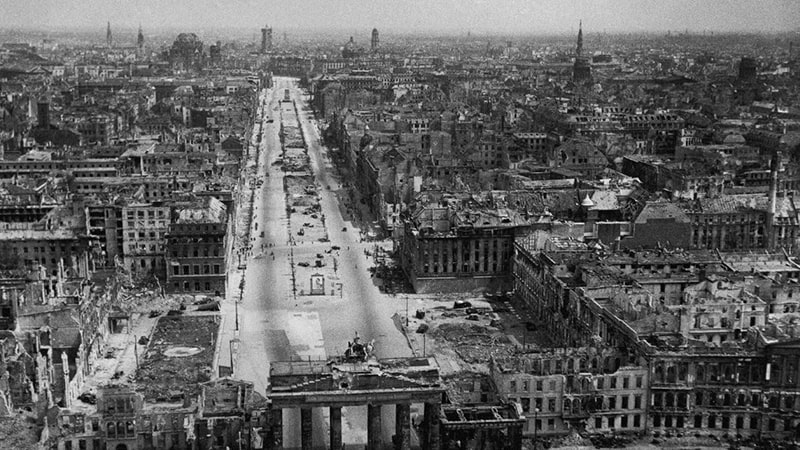
1998

after
Today, Berlin has become a global city for international affairs, young business founders, creative industries, higher education services, corporate research, popular media and diverse cultural tourism. Population-wise, Berlin became one of the most rapidly growing urban centers in Europe after 2010, much of which has been due to immigration.
15. Yerevan, Armenia
before
The history of Yerevan dates back to the 8th century BC, with the founding of the fortress of Erebuni in 782 BC by king Argishti I at the western extreme of the Ararat plain. Yerevan is older than Rome for about 30 years. Erebuni was “designed as a great administrative and religious centre, a fully royal capital”. At the beginning of the 20th century, Yerevan was a small city with a population of 30,000.
1916

Now

after
Since 2000, central Yerevan has been transformed into a vast construction site, with cranes erected all over the Kentron district. Officially, the scores of multi-storied buildings are part of large-scale urban planning projects. Yerevan was named the 2012 World Book Capital by UNESCO. Yerevan is an associate member of Eurocities.
16. Jakarta, Indonesia
before
Jakarta is one of the oldest continuously inhabited cities in Southeast Asia. Established in the fourth century as Sunda Kelapa, the city became an important trading port for the Sunda Kingdom. It was the de facto capital of the Dutch East Indies when it was known as Batavia.
1960
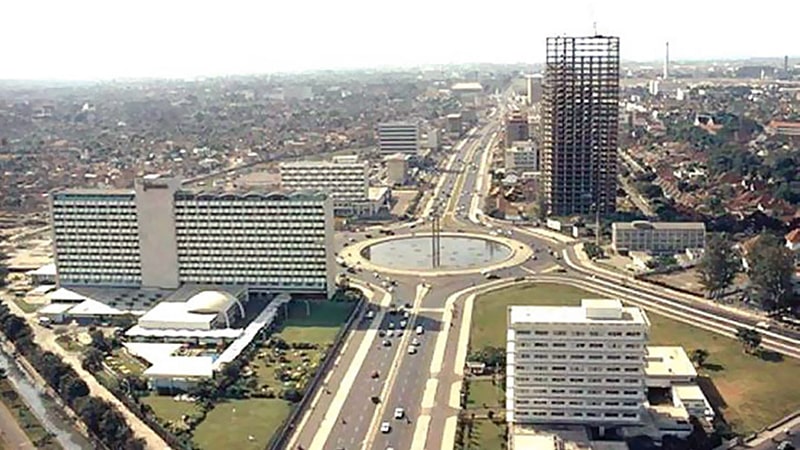
Now

after
After decades of economic growth, the city and the country were hit hard by a financial crisis in Asia in 1997–98. Widespread antigovernment protests and rioting ensued, which claimed the lives of more than 500 people. Thus, at the outset of the 21st century, Indonesia and Jakarta were undergoing a dramatic economic, political, and social transition.
17. Melbourne, Australia
before
Melbourne became a town in 1842 and a city in 1847, but its first main surge in growth came in the early 1850s following the discovery of gold near Bendigo and Ballarat less than 100 miles (160 km) away. In three years the population of Melbourne increased fourfold to 80,000.
1920

Now

after
The revitalization of central Melbourne continued after 1990 as the residential population grew and the massive Docklands development project began to transform the long-neglected waterfront area into a spectacular urban showplace.
18. London, United Kingdom
before
The city of London was founded by the Romans and their rule extended from 43 AD to the fifth century AD, when the Empire fell. During the third century, Londinium, the name given to the town by the Romans, had a population of 50,000, mainly due to the influence of its major port.
1920

after
Around the start of the 21st century, London hosted the much derided Millennium Dome at Greenwich, to mark the new century. Other Millennium projects were more successful. One was the largest observation wheel in the world, the “Millennium Wheel”, or the London Eye, which was erected as a temporary structure, but soon became a fixture, and draws four million visitors a year. The National Lottery also released a flood of funds for major enhancements to existing attractions, for example the roofing of the Great Court at the British Museum.
On 6 July 2005 London won the right to host the 2012 Olympics and Paralympics making it the first city to host the modern games three times.
19. New York, USA
before
Situated on one of the world’s largest natural harbors, New York City is composed of five boroughs, each of which is a county of the State of New York. The five boroughs—Brooklyn, Queens, Manhattan, the Bronx, and Staten Island—were consolidated into a single city in 1898.
New York is home to the highest number of billionaires of any city in the world. New York City traces its origins to a trading post founded by colonists from the Dutch Republic in 1624 on Lower Manhattan; the post was named New Amsterdam in 1626.
1962

Now
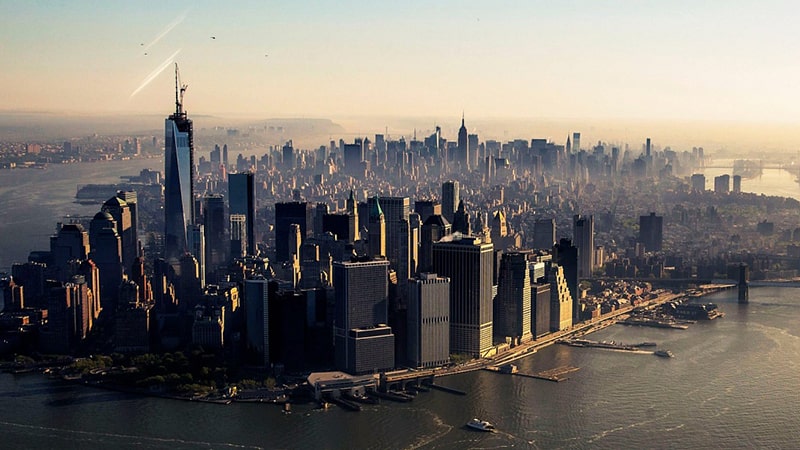
after
New York City suffered the bulk of the economic damage and largest loss of human life in the aftermath of the September 11, 2001 attacks. Two of the four airliners highjacked that day were flown into the twin towers of the World Trade Center, destroying them and killing 2,192 civilians, 343 firefighters, and 71 law enforcement officers. The North Tower became the tallest building ever to be destroyed anywhere then or subsequently.
20. Kuala Lumpur, Malaysia
before
Kuala Lumpur was founded ca. 1857 at the confluence of the Gombak and Klang rivers. In English, the name Kuala Lumpur literally means “muddy confluence”. The venture into the muddy confluence started when a member of the Selangor royal family hired tin prospectors to open tin mines in the Klang Valley.
1962

Now

after
Starting from the early 1990s, Kuala Lumpur experience considerable development since the Asian Economic Boom of the early 1990s (when economic growth was averaging at 10%). Under the initiative the Prime Minister Mahathir Mohamad at globalization, major urban developments in the Klang Valley has resulted in an extended Kuala Lumpur Metropolitan Area.
21. Chicago, USA
before
Chicago was incorporated as a town in 1833 and as a city in 1837, when its population reached 4,000. In 1848 Chicago got its first telegraph and railroad. Two innovations—grain elevators and the Board of Trade’s wheat grading standards—quickly transformed the way crops were sold.
1937

Now

after
Chicago earned the title of “City of the Year” in 2008 from GQ for contributions in architecture and literature, its world of politics, and the downtown’s starring role in the Batman movie The Dark Knight. The city was rated by Moody’s as having the most balanced economy in the United States due to its high level of diversification.
22. Shanghai, China
before
Originally a small agricultural village, Shanghai developed during the late Qing dynasty (1644–1912) as one of China’s principal trading ports. Since the economic reforms of the early 1990s the city has burgeoned to become one of Asia’s major financial centers and the world’s busiest container port.
1987
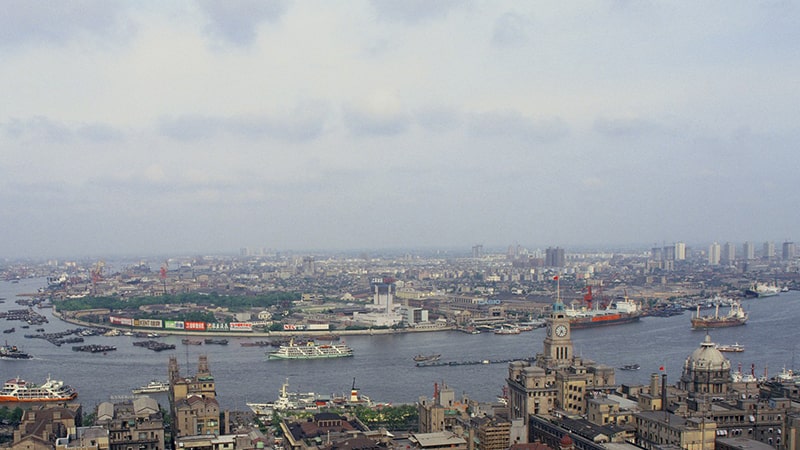
Now

after
The amount of building activity in Shanghai fueled by government investment expenditures continues to be astounding. Since the 1980s, Shanghai’s economy shifted from over 77% of gross domestic product in secondary sector manufacturing to a more balanced sectoral distribution of 48% in industry and 51% in services in 2000 and 2001. Employment in manufacturing reached almost 60% in 1990 and has declined steadily since to 41% in 2001, while employment in the tertiary sector has grown from 30% in 1990 to more than 47% in 2001.
The rapid growth in population, factories and motor vehicles has generated environmental issues. Experts say the chief problems involve air and water pollution and the accumulation of solid wastes.
23. Los Angeles, USA
before
Although Los Angeles was a town that was founded by Mexican families from Sonora, it was the Spanish governor of California who named the settlement. In 1777, Governor Felipe de Neve toured Alta California and decided to establish civic pueblos for the support of the military presidios.
1935
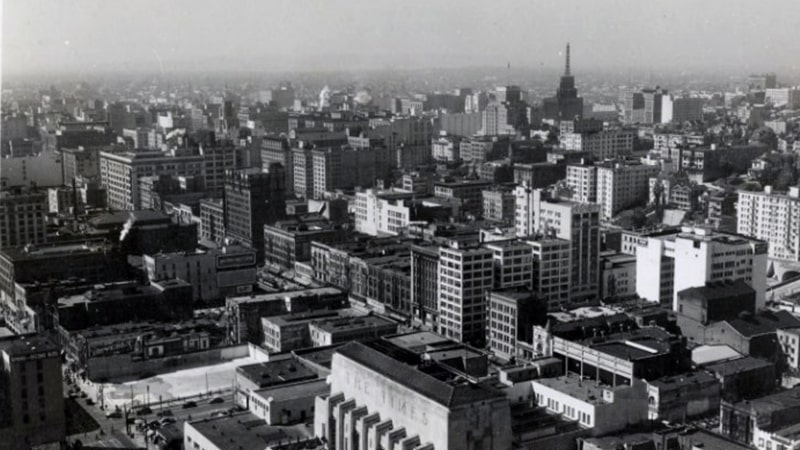
Now

after
During the latter decades of the 20th century, the city saw a massive increase of street gangs. At the same time, crack cocaine became widely available and dominated by gangs in the 1980s. Although gangs were disproportionately confined to lower-income inner-city sections, fear knew no boundaries citywide. Since the early 1990s, the city saw a decrease in crime and gang violence with rising prices in housing, revitalization, urban development, and heavy police vigilance in many parts of the city. With its reputation, it had led to Los Angeles being referred as “The Gang Capital of America”.
23. San Francisco, USA
before
Originally a Spanish (later Mexican) mission and pueblo, it was conquered by the United States in 1846 and by an invading army of prospectors following the 1848 discovery of gold in its hinterland. The Gold Rush made San Francisco a cosmopolitan metropolis with a frontier edge. The great 1906 earthquake and fire destroyed much of the city but barely slowed its momentum.
1906

Now

after
On October 17, 1989, another large earthquake hit the city, damaging buildings, collapsing freeways and killing 67. A decade later, a boom centered on Internet technology began, drawing entrepreneurs to the city and raising rents, respectability and resentment in its rougher neighborhoods. The crowded city’s population, steady for decades, began to rise again.
24. Long Beach, USA
before
The area that is now Long Beach was first settled as part of a massive Spanish land grant to soldier Manuel Nieto, encompassing the historic 28,000-acre Ranch Los Alamitos and its sister rancho, 27,000-acre Rancho Los Cerritos in 1784. From 1902 to 1910 Long Beach was the fastest growing city in the United States.
1953

Now
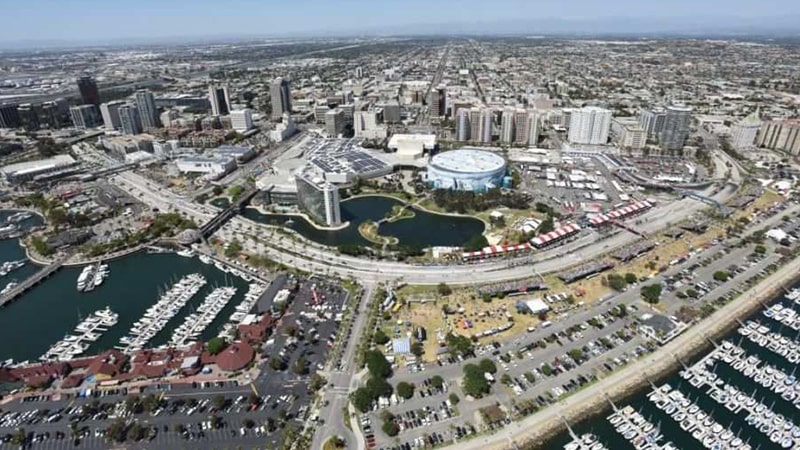
after
The city is known for its waterfront attractions, including the permanently docked RMS Queen Mary and the Aquarium of the Pacific. Long Beach also hosts the Grand Prix of Long Beach, currently an IndyCar race and the Long Beach Pride Festival and Parade. The California State University, Long Beach, one of the largest universities in California by enrollment, is located in the city.
25. Macau, China
before
Macau is a former colony of the Portuguese Empire, after Ming China leased the territory as a trading post in 1557. Portugal paid an annual rent and administered the territory under Chinese sovereignty until 1887, when it gained perpetual colonial rights in the Sino-Portuguese Treaty of Peking. The colony remained under Portuguese rule until 1999, when it was transferred to China. Macau is a special administrative region of China, which maintains separate governing and economic systems from those of mainland China under the principle of “one country, two systems”.
1964
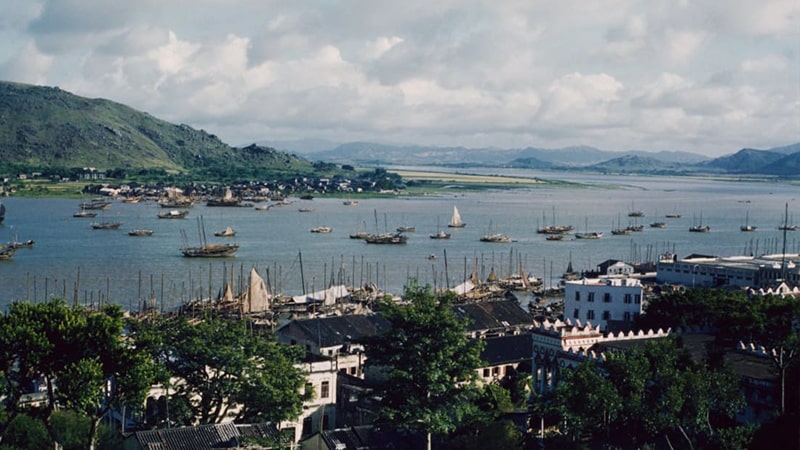
Now

after
Macau liberalized its casino industry (previously operating under a government-licensed monopoly) to allow foreign investors, starting a new period of economic development. The regional economy grew by a double-digit annual growth rate from 2002 to 2014, making Macau one of the richest economies in the world on a per capita basis. Political debates have centered on the region’s jurisdictional independence and the central government’s adherence of “one country, two systems”. While issues such as national security legislation have been controversial, Macanese residents generally have high levels of trust in the government.

